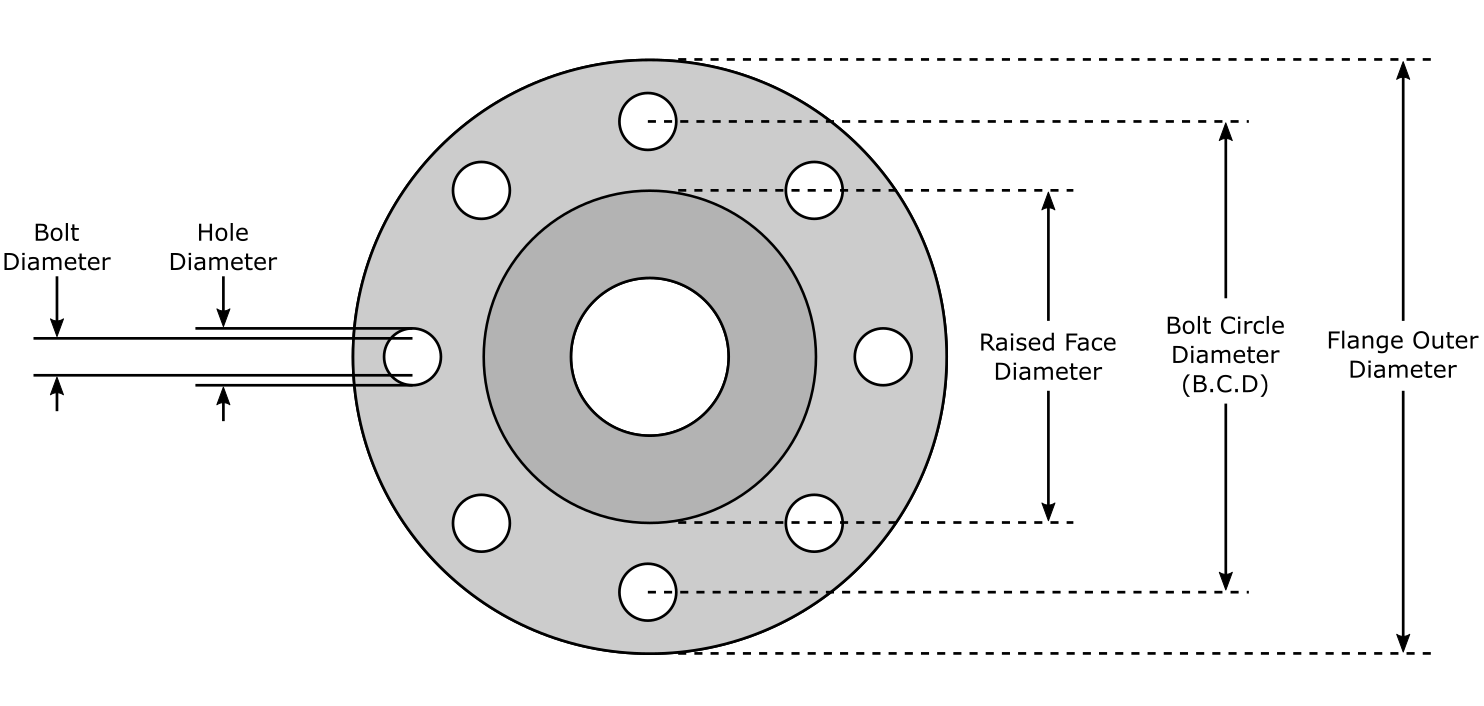Flange Dimensions
As with pipes, it was necessary to standardise the dimensions of the various flange types depending upon requirements i.e. the service conditions they are likely to encounter. Standardisation also facilitates easier communication between relevant parties (designer, manufacturer etc.), with a reduced likelihood of error.

Typical Flange Dimensions
Example
A piping designer in Canada may wish to instruct on site fitters in Kuwait to use a certain flange with specific dimensions. This process would be tedious considering the criteria that must be specified (internal diameter, outside diameter, thickness, hole diameter etc.). To circumvent this problem, the designer indicates the type of flange, its size, pressure class, schedule, and the standard to which it is to conform. Additionally, it may be necessary that the flange conforms to a certain specification e.g. ASTM A105.
Once these parameters have been given, the fitter can locate the relevant flange and all dimensions within the given standard; the material and sealing face type is usually defined in the standard or specification also. The details given by the piping designer may appear as follows:
Flange Type: Welding Neck
Size: NPS 8
Class: 150
Schedule: 40
Standard: ASME B16.5
Specification: ASTM A105
Unless otherwise specified, the sealing face chosen will have a raised face (RF), as this is the default face used within the ASME B16.5 standard.
Are you enjoying this article so far? Then be sure to check out our Flange Fundamentals Video Course. The course has over five hours of video content, a 52 page colour illustrated handbook (this article is an extract from the handbook), a quiz, and you will receive a certificate of completion when you finish the course. Enjoy!
Related Online Engineering Courses
Introduction to Steam, Boilers and Thermodynamics
Additional Resources
https://blog.worldwidemetric.com/problem-solving/guide-to-properly-measuring-flanges
